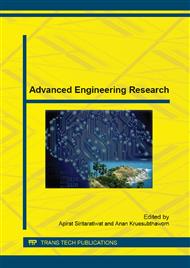p.410
p.414
p.418
p.422
p.427
p.431
p.435
p.441
p.445
The Investigation of Slotted Capacitor Plate on the Performance of Planar Type Witricity Device
Abstract:
In designing a Witricity Device, it is quite challenging to achieve highly efficient transferrable power with the consideration of size reduction. The planar type Witricity device is designed to be thin and small in size but posses an adequate efficiency of transferrable energy. This paper investigates the slot variation influence of capacitor plate to the Witricity device performance. Slot is introduced to the varied number of capacitor plate, which initially designed in planar rectangular shape. In addition, the effect of non-rectangular-shaped capacitor is studied. The best design with two rectangular-shaped slotted capacitors is fabricated and measured that achieve more than 70% coupling efficiency for 20 mm distance with its 40 mm x 40 mm dimension and 0.67 mm thickness.
Info:
Periodical:
Pages:
427-430
Citation:
Online since:
August 2015
Authors:
Price:
Сopyright:
© 2015 Trans Tech Publications Ltd. All Rights Reserved
Share:
Citation:


